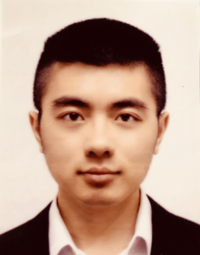November 2023 CDT Mathematics of Random Systems Workshop
Owen Futter, Wei Xiong and Professor Paul Bressloff (Imperial College London)

14:15 – 14:55 Wei Xiong, CDT student at University of Oxford
Dynamics of market making algorithms in dealer markets: Learning and tacit collusion
Abstract: The widespread use of market-making algorithms in electronic over-the-counter markets may give rise to unexpected effects resulting from the autonomous learning dynamics of these algorithms. In particular the possibility of “tacit collusion” among market makers has increasingly received regulatory scrutiny. We model the interaction of market makers in a dealer market as a stochastic differential game of intensity control with partial information and study the resulting dynamics of bid-ask spreads. Competition among dealers is modeled as a Nash equilibrium, while collusion is described in terms of Pareto optima. Using a decentralized multi- agent deep reinforcement learning algorithm to model how competing market makers learn to adjust their quotes, we show that the interaction of market mak- ing algorithms via market prices, without any sharing of information, may give rise to tacit collusion, with spread levels strictly above the competitive equilibrium level.

15:00-15:40 Owen Futter, CDT student at Imperial College London
Signature Trading: A Path-Dependent Extension of the Mean-Variance Framework with Exogenous Signals
Abstract: We derive a novel path-dependent extension for mean-variance portfolio optimisation by recasting the problem in terms of signature trading strategies, allowing to incorporate the evolution of the past signal-asset time series into the optimisation problem, avoiding the need for direct return prediction. The method is intuitive, interpretable and a lightweight alternative to modern machine learning methods whilst still being able to capture non-linearities for a large class of trading strategies (including momentum and pairs trading).

16:00 – 16:50 Prof Paul Bressloff (Imperial College London)
Stochastic processes with resetting
Abstract: A topic of considerable interest within nonequilibrium statistical physics is the study of stochastic search processes with resetting, whereby the current position of the particle or searcher is reset to a fixed location over a random sequence of times. In many cases, the mean first passage time (MFPT) for finding a target has a unique minimum as a function of the resetting rate. In this talk I review the basic theory of random search processes with resetting, and then consider two applications.
(A) Cytoneme-mediated morphogenesis. Cytonemes are long, thin actin-rich cell protrusions varying in length from 10-200 mm. They allow for the active transport of morphogens or their cognate receptors by establishing direct physical contacts between cells. Cytonemes are also thought to play a role in cell-to-cell viral spread. We formulate the rapid growth and shrinkage of cytonemes prior to finding a target cell as a FPT problem with resetting and determine the MFPT. We also indicate how queuing theory can be used to determine the accumulation of resources across an array of target cells.
(B) Transition path theory (TPT). Many chemical reactions can be formulated in terms of particle diffusion in a complex energy landscape. TPT is a theoretical framework for describing the direct (reaction) pathways from reactant to product states within this energy landscape, and calculating the effective reaction rate. It is now the standard method for analyzing rare events between long lived states. We consider a completely different application of TPT, namely, a dual-aspect diffusive search process in which a particle alternates between collecting cargo from a source domain A and then delivering it to a target domain B. The rate of resource accumulation at the target, kAB, is determined by the statistics of direct paths from A to B. Stochastic resetting introduces two non-trivial problems in the application of TPT. First, the process is not time-reversal invariant. Second, calculating kAB involves determining the total probability flux of direct transport paths across a dividing surface S between A and B, which includes discontinuous jumps due to resetting.



